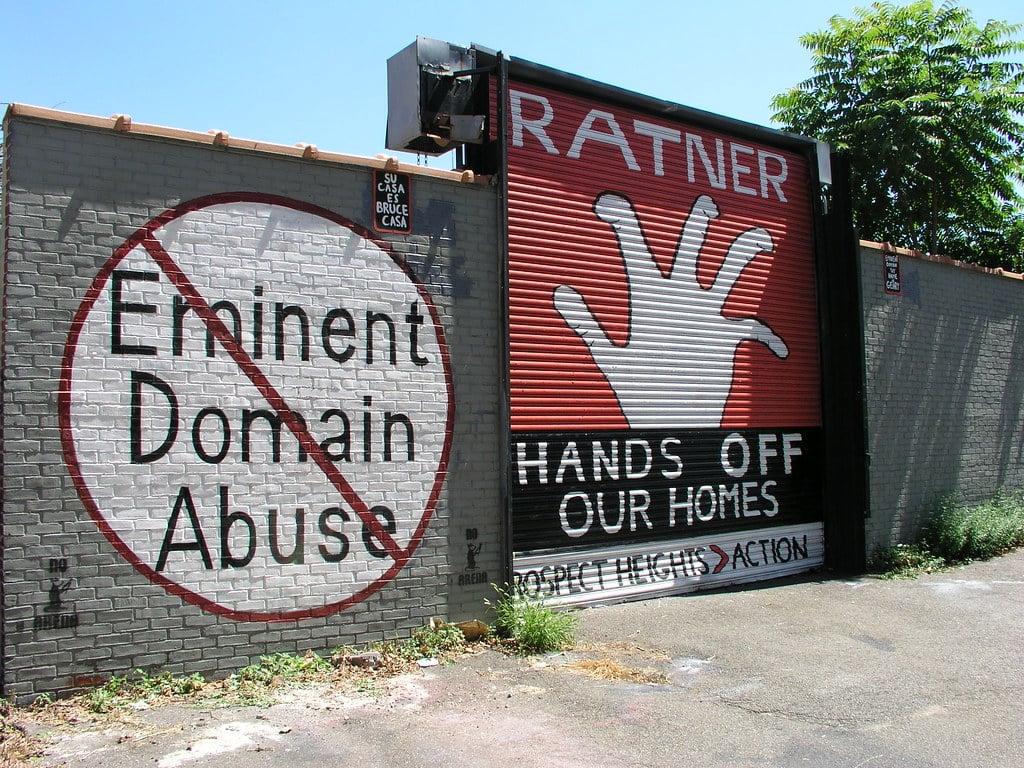Eminent Domain Examples & Abuse
Last updated Monday, July 17th, 2023
How to Protect Your Property From Eminent Domain Abuse
 The right to private property is one of America’s foundational rights. However, the power of eminent domain allows the government to take control of your private property for public use.
The right to private property is one of America’s foundational rights. However, the power of eminent domain allows the government to take control of your private property for public use.
Building highways, power stations, airports and schools is something every state needs to support their booming population.
It takes a lot of effort and resources to uproot your business or home and set it up in a new location.
That’s why there are multiple state and federal laws to ensure you’re offered just compensation for your land.
But you have to ask yourself – “Am I getting just compensation or just the bare minimum?”
It’s not hard to sense that you’re being abused when you’re being pressured to sign a lowball offer. But it’s a bigger challenge to actually do something about it. You need to legally prove eminent domain abuse and build a strong claim to get what you deserve.
Our team of experienced eminent domain lawyers will defend your property rights and get you a much higher offer than your initial offer.
Are You a Victim of Eminent Domain?
Call Your Texas Eminent Domain Lawyer For A FREE Case Review And Know What Your Case Is Worth.
Compensation and its Importance
The Takings clause in the Fifth Amendment of the US Constitution ensures no government authority can take over your private property without offering you just compensation. Texas laws also dictate that you must receive fair compensation for any property taken, damaged, or destroyed by the condemning authority.
Here are five key factors that must be evaluated to determine a fair compensation for your property:
- Your land’s fair market value
- Fair market value of any property improvements
- Damages to your property caused by the taking of land
- Loss of income in case the property is used for business purposes
- Relocation expenses
History of Eminent Domain Abuse
Before the 1950s, the power of eminent domain was mainly used for building roads, schools, and highways.
Later, the courts started granting more permissions for public utility projects and slum clearances that often involved private corporations.
Many more Texas landowners started reporting cases of eminent domain abuse after that period. Unlawful seizure and unfair compensation started becoming a growing problem.
Big corporations like General Motors and Pfizer were penalized for eminent domain abuse on a massive scale.
The Supreme Court has gone back and forth on their position on eminent domain abuse throughout history.
Unfortunately, they basically issued a blank check for abusing eminent domain in 2005. In the Kelo vs City of New London case, the Supreme Court upheld the condemnation of private property for economic development.
Institute of Justice Report
The Kelo vs New London judgment opened the floodgates for eminent domain abuse in the name of economic development.
Since then, 47 states have taken some legal measures to protect private property owners from this abuse.
The Institute of Justice reviewed the measures taken by Texas and gave it a B- rating. Only four states have explicitly rejected Kelo vs New London ruling so far.
Texas has eight of America’s 15 fastest-growing cities.
Most of the state’s land is privately owned. And its infrastructure requires aggressive expansion to keep up with an exploding population.
Naturally, there’s been a significant spike in eminent domain use for public projects.
Examples of Eminent Domain Abuse
Here are a few infamous examples of eminent domain use:
- Kelo vs City of New London – The most shocking thing about this case was how they got away seizing private property without even properly classifying it as a “slum” or “blight.”
- Las Vegas residential building takeover – In the mid-90s, a widow lost property due to improper blight claim evaluation.
- Toledo Chrysler manufacturing plant takeover – Toledo wanted to give Chrysler’s manufacturing plant a red-carpet welcome. So they took a huge loan and even declared 83 well-maintained homes and 16 businesses as a slum to support them. The company had promised to provide employment to 5000 people. However, they only hired 2100 people.
- Texas real estate company takeover – A big real estate company from Hearst, Texas was involved in eminent domain abuse. They took over 127 homes to expand their private mall.
- Iowa farmland condemnation – The Supreme Court permitted the Iowa Utilities Board to take control of privately owned farmland to build the Dakota Access pipeline. It ended up displacing several families.
Legal Battles and Property Owners’ Resistance

You’ll end up facing several challenges while resisting eminent domain, such as:
- Keeping up with legal knowledge about your private properties and identifying violations
- Filling out the right paperwork and meeting all legal deadlines
- Lack of expert resources to counter the government’s initial offer
- Inability to properly document depreciation in property value to get compensation for damages
- Keeping up with communications between various parties involved in the condemnation process
An experienced eminent domain lawyer will take on all these responsibilities on your behalf. You won’t have to lift a finger till your case is settled.
Corporate Interests and Impact on Residents and Small Businesses
Did you know lower income households and small businesses have been the biggest victims of eminent domain abuse?
Imagine your life and livelihood turned upside down when you’re already struggling living paycheck to paycheck. That’s what happens when corporate interests are prioritized over community needs.
Lower income households and small businesses are easy targets for authorities to classify as “slums” or “blight.” The sudden disruption in their lives with the property takeover and relocation can have harsh consequences.
The government also takes advantage of their desperation to get urgently compensated by lowballing them. Communities rarely get a fair distribution of benefits from eminent domain.
Protecting Property Rights through Legal Representation

- You will be educated about your rights and trained to properly communicate with the government authorities
- Ensuring the government’s claim is legitimate and identifying any violations
- Hiring experts to maximize your property value and present a valid counter offer
- Documenting your fair market land value, damages, and relocation costs to strengthen negotiations
- Taking care of all complex legal and financial burden so that you can peacefully get the settlement you deserve
Are You a Victim of Eminent Domain?
Call Your Texas Eminent Domain Lawyer For A FREE Case Review And Know What Your Case Is Worth.
Frequently Asked Questions
What is eminent domain?
Eminent domain is a law that permits government authorities to take control of private property for public use. The process through which a property is taken over is known as condemnation.
How should the government compensate property owners?
Here are five key factors that the government must account for to determine a fair offer for your property:
- What are the market rates for similar properties in your area?
- What is the fair market value of any property improvements you’ve implemented?
- What are the damages caused to your property during the condemnation process?
- How much income have you lost if you’re running a business?
- What are your relocation costs?
How can property owners resist eminent domain?
You’re legally entitled to file a claim against a condemning authority if your property is unlawfully seized or you’re not compensated for it. The first thing you should do is hire an experienced eminent domain lawyer.
What are the implications of eminent domain prioritizing corporate interests?
Condemning authorities often wave the flag of economic development and prosperity to justify eminent domain abuse. But there’s a huge difference between “private property for public use” and “private property for private use.”
An independent research study found that states that restricted eminent domain use for corporate interests weren’t negatively impacted in terms of employment or gross state product.
So you have the right to legally contest any condemnation that cannot definitively prove it’s exclusively for public use.
How can legal representation help in protecting property rights?
Here’s how strong legal representation can help you protect your property rights:
- Learning what and what not to share with condemning authorities
- Reviewing the government’s claim and noting any legal violations
- Hiring appraisers, surveyors, and environmentalists to build up your compensation claim
- Negotiating for just compensation, including land value, damages, and relocation costs
- Handling all complex legal and financial responsibilities till your case is settled

